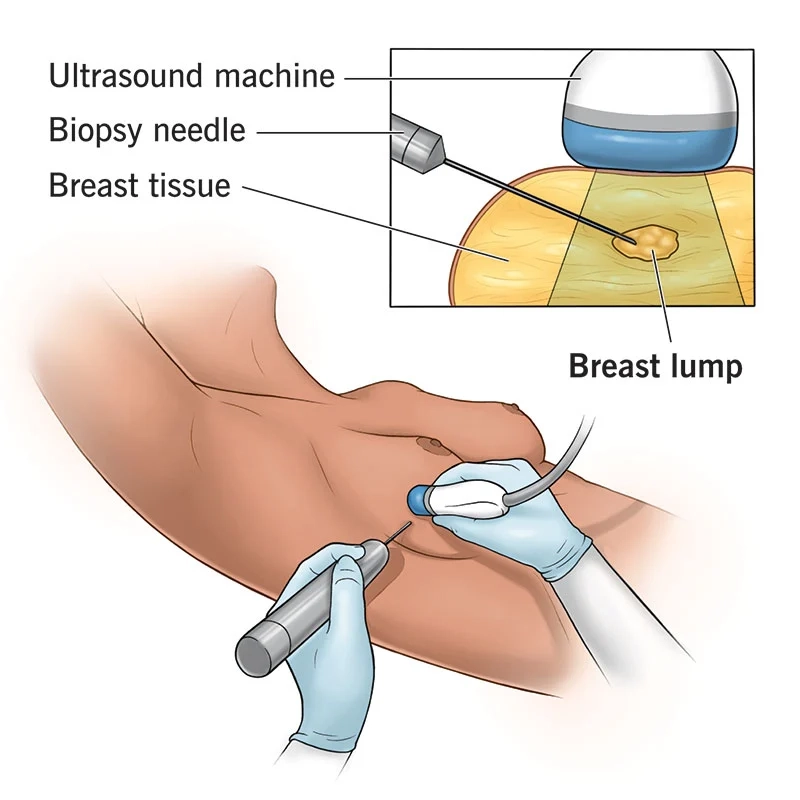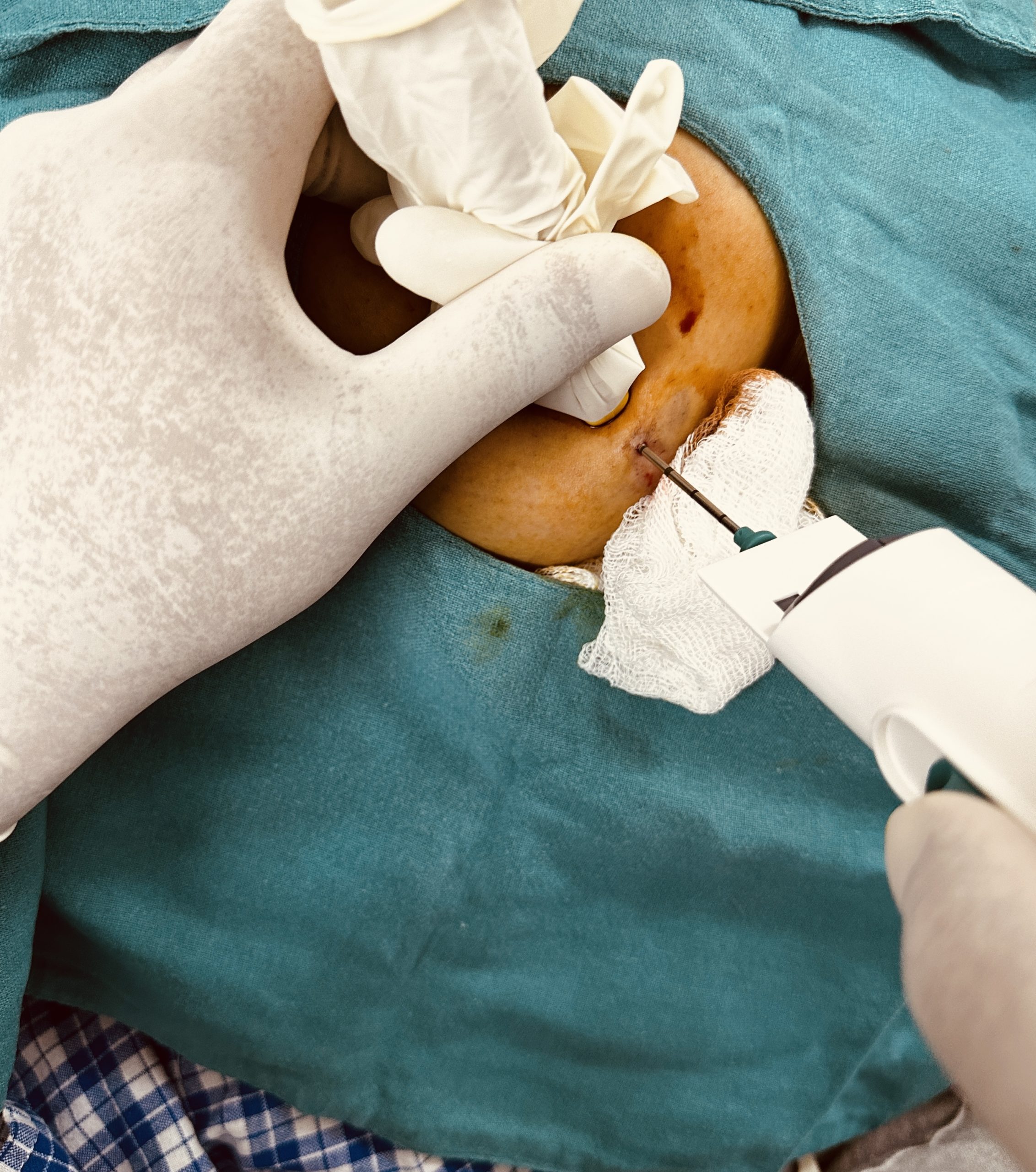
Core Needle Biopsy
A breast lump core needle biopsy is a medical procedure used to obtain a small sample of tissue from a suspicious breast lump for further examination. This type of biopsy is typically performed when a lump is detected during a physical examination, mammogram, or ultrasound, and the Doctor wants to determine whether the lump is cancerous or benign.
Here is an overview of the procedure:
- Preparation: Before the biopsy, you may undergo imaging studies such as mammography or ultrasound to precisely locate the lump. You should inform your Doctor about any medications you are taking, allergies, or any history of bleeding disorders.
- Local Anesthesia: The area around the lump is usually numbed using a local anesthetic to minimize pain and discomfort during the procedure. In some cases, you may be given a mild sedative.
- Biopsy Procedure: A core needle biopsy involves using a hollow needle to remove small cores or cylinders of tissue from the breast lump. The needle is typically guided into position using ultrasound or mammography to ensure accuracy. Several samples may be taken to increase the chances of obtaining a representative tissue sample.
- Tissue Retrieval: The tissue samples are then sent to a laboratory for analysis. A pathologist examines the tissue under a microscope to determine whether it is cancerous (malignant) or non-cancerous (benign).
- Post-Biopsy Care: After the procedure, you may experience some mild bruising, swelling, or tenderness at the biopsy site. This is normal and usually resolves on its own. Your Doctor will provide instructions on post-biopsy care and any restrictions on activities.
- Results: The final biopsy results are typically available within a few days to a week. Your Doctor will discuss the findings with you and help determine the appropriate next steps based on the results.
It’s important to note that the decision to perform a core needle biopsy is based on various factors, including the characteristics of the lump, your medical history, and other diagnostic results. If you are advised to undergo a breast biopsy, it’s essential to discuss the procedure, potential risks, and benefits with your healthcare provider to make an informed decision.


Performed By: Dr.Adheesh Bhandari